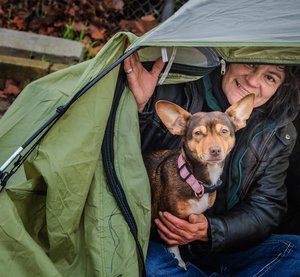“The greatest suffering is being lonely, feeling unloved, having no one. I have come more and more to realize that it is being unwanted that is the worst disease that any human being can ever experience.” Mother Teresa


This is a Thanksgiving story about two communities: Sacramento’s homeless community, what I call “Second City;” and, Loaves & Fishes, a sanctuary for homeless men, women, and children seeking survival services. Second City is where poverty, loneliness, fear and despair are found. Loaves & Fishes is where Sacramento’s homeless are welcomed and treated as wanted guests.
November 21, 2017. I am at Loaves & Fishes to shoot the Sacramento Blues Society Thanksgiving concert in Friendship Park. Vocalist Val Starr opens with “We’re here to take the blues away.” Today, more than 700 homeless Loaves & Fishes’ guests will be fed and entertained.



No doubt about it. Today is special. It is what Val Starr says it is, “you listen to the blues to get rid of the blues.” The images below evidence the magic of the blues cutting through “the worst disease that any human being can ever experience.” For me this is a fun time and a time to be thankful. I get to listen to great music and capture images of Loaves & Fishes staff, volunteers, musicians, and homeless guests enjoying themselves.

























































